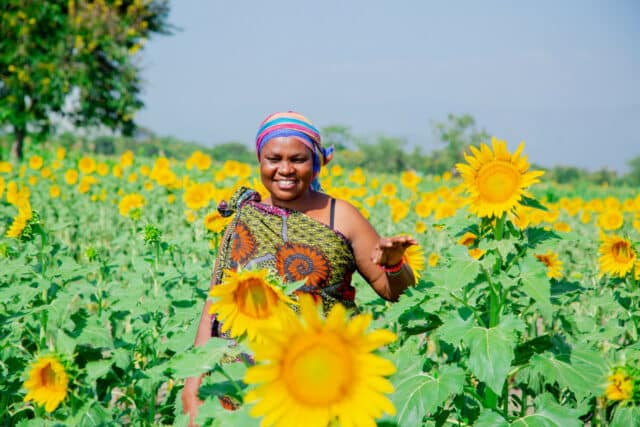News
Ethiopia
18 August 2023
Low-income households piloted urban agriculture in Addis Ababa

In Ethiopia’s capital city, Addis Ababa, the cost of living is soaring and many of the poorest households are struggling to afford food, rent, healthcare and school fees.
Urban agriculture is a growing movement that uses pockets of underused urban space to grow vegetables and rear livestock and fish. It is gaining global attention for its promising potential to improve urban food security.
With Addis Ababa’s population of more than four million people, 22% of whom are poor and 23.5% unemployed, advancing urban agriculture in the city is a powerful way to build healthy diets and job opportunities, and create a greener city.
A pilot plan
A new report, Urban agriculture in Addis Ababa, Ethiopia (PDF, 2MB) outlines how in 2022 Farm Africa worked with Ethiopia’s Ministry of Planning and Development (MoPD) to implement a 15-month urban agriculture pilot project in the city, funded by Sida. The project aimed to:
- improve incomes, nutrition and food security for 100 low-income households by training them in urban agriculture
- create a learning hub for the sharing of urban agriculture techniques
- promote urban beautification and environmental protection.
The project participants worked with Farm Africa to develop an organic urban agriculture demonstration site on waste ground in the MoPD compound. They were encouraged to replicate their learning at home with compost and seeds supplied by the project.
Growing inspiration

Photo: Gadissa Debeli Tessema
Within a year, the waste ground at the MoPD has been transformed into a green oasis. The first of its kind in the country, the demonstration site showcases a range of growing methods that can be implemented in urban areas, including many that optimise vertical space. The methods have been carefully chosen to provide solutions for different budgets and spaces, from systems constructed from ordinary household materials like PVC pipes and discarded containers to sophisticated tiering systems.
Cultivating interest
The MoPD compound has proved an ideal place for the demonstration site. With its high visibility and central location, the site has welcomed numerous visitors, including civil servants, community groups and academic institutions. Forty-nine government staff received training on urban agriculture over the year.
The enthusiasm of project participants has been high. Of the 100 households taking part, 90% are now using the techniques they’ve learnt to grow food at home. And since most people in the city have smartphones, the project has a thriving group chat used by over 75 participants to coordinate their work at the demonstration site and swap growing tips. In focal group discussions, many have expressed how much they’ve enjoyed taking part in the project. That sentiment has been particularly strong amongst those who were jobless and elderly women who had previously spent most of their time at home.
Growing food security, nutrition and incomes

The impacts on food security and nutrition have been very encouraging. Average dietary diversity of participant households increased by 75% by the end of the year, and the proportion of those able to obtain year-round access to sufficient food for their families increased by 18%. What’s more, the levels of heavy metals are much lower in the project’s vegetables compared with equivalent produce bought from the city’s markets.
Project training covered business aspects such as establishing village savings and loan associations (VSLAs), marketing and customer relation skills. During the course of the year seven VSLAs were established, and by selling the surpluses of their production, participant households were able to increase their annual incomes by 49%.
Meet Sihen
Photo: Gadissa Debeli TessemaGrowing plants has always been Sihen Tsigie’s passion, but she had always grown flowers. Now her house is surrounded by a variety of vegetables and herbs including lettuce, beetroot, collard greens, carrots, Swiss chard and mint. She is growing for her own consumption and has joined Menen VSLA, one of the VSLAs established through the project.
“I have harvested and eaten lettuce and Swiss chard more than five times”, she says. “There is a big difference between vegetables from the market and from your yard. It’s fresh and tasty. Above all, you feel confident enough to eat it, as you grow it clean and organic.”
Lessons learnt
In one short year the project has demonstrated what can be achieved when underused public spaces are repurposed for food production. Incorporating community-owned agriculture spaces into urban planning strategies could play a powerful role in improving the livelihoods of poor urban households, while creating greener and more beautiful cities for all.
To find out more download the full report: Urban agriculture in Addis Ababa, Ethiopia (PDF, 2MB).




